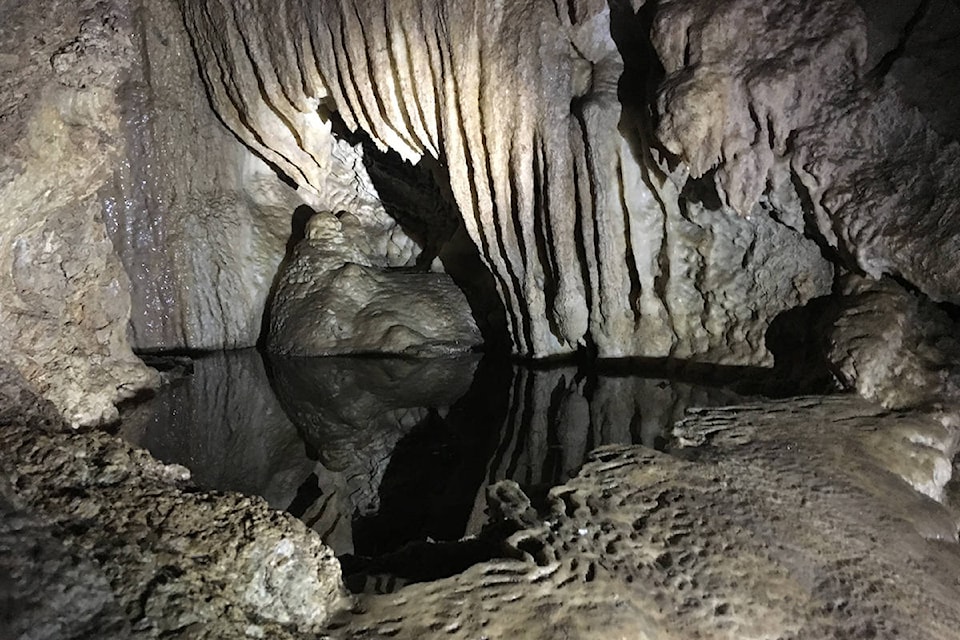Driving down a dusty dirt road with the late summer sun beating down on our car, I’m excited – and a little bit anxious – about exploring the subterranean depths of some of the most famous caves in Canada.
“Lots of people are anxious about tight spaces, but that goes away as soon as you’re in the cave,” explains the lady who checks us in at Horne Lake Caves, part of a provincial park that lies a short drive from Qualicum Beach. My 11-year-old son isn’t convinced, but the mandatory headlamp and helmet are a hit, so he decides to take her word for it.
Dressed in long pants and carrying jackets in preparation for cool temperatures below ground, we follow guides Liam MacDonald and Spencer Dakin Kuiper along a forest trail to the caves. Horne Lake offers a variety of tours from mild to wild, and we’ve opted for something in the middle: a three-hour, multi-cave spelunking adventure that includes a ride down Canada’s only cave slide. Hiking up shaded switchbacks, we make several stops along the way to learn about the karst landscape, where caves form, and the ancient fossils embedded in the rocks.
“They look like a plant, but they’re actually marine invertebrates related to a sea star and sea urchin,” explains Liam, pointing to crinoid fossils in a large limestone rock. “They’re called living fossils because they’re still alive today. They’re survived 30 million years.”
But the big draw here are the amazing crystal formations – the stalagmites and stalactites and flowstone calcite – waiting for us inside the first cave.
Descending down steep stairs into Riverbend Cave, it’s about 20 degrees cooler than outside and immediately refreshing. Scrambling over rocks and careful not to touch any of the growing calcite, we go deeper into the cavern in awe of its mysterious beauty.
“There are only two places in the world you have total darkness,” Spencer tells us. “Caves and the deep ocean, and it can be a bit disorienting.”
With our headlamps illuminating our way, we venture further into the cave and stop before we have to start crawling. We’re about 80 metres along and the ground is around 30 metres above us. Liam points out the flowstone calcite – it looks like peanut butter when it’s growing – and tells us it’s 65,000 years old. When it stops growing, it will turn white, almost like sparkling snow. But my favourite thing is the cave glitter, which is in abundance at Main Cave, our second stop and a completely different experience.
“Cave glitter is like a starry night and the glitter is for your eyes only,” says Spencer of the water droplets along the top of the cave that sparkle in the light of our headlamps. “Cover your light and it’s gone.”
This cave is a tighter squeeze in several sections and metal ladders and walkways that remind me of a snakes and ladders game have been installed to protect the calcite. After climbing up a small and thankfully only trickling waterfall, we scoot down the cave slide and start heading back to daylight. But before we do, we stop in total darkness and Spencer tells us to turn off our headlamps. It’s completely black and the only noise is the sound of dropping water.
“We were just listening to the cave grow,” Spencer says before turning his light back on. “With each drop of water, the cave is growing.”
For more information, visit hornelake.com.
